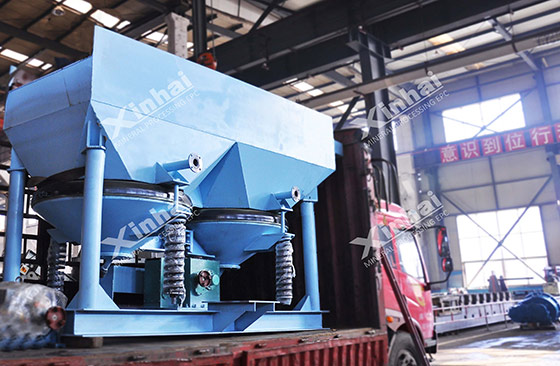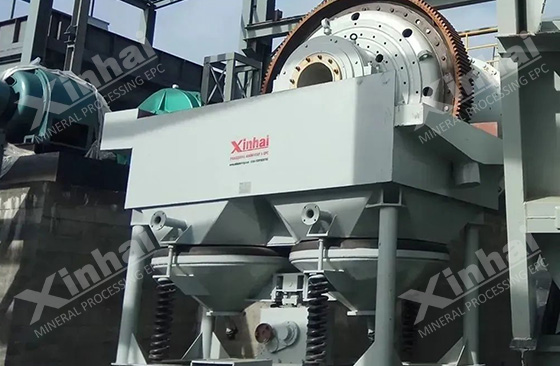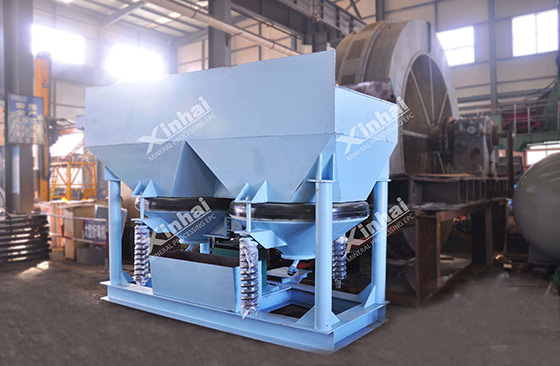The jig is a commonly used mineral gravity separation equipment that mainly uses water flow and gravity to sort valuable minerals and gangue minerals. Jig machines are widely used for separating metal minerals, including lead, zinc, tin, copper, iron, manganese and chromium. Since there is usually a large density difference between metallic minerals and gangue, the jig can effectively separate valuable metal minerals from gangue. The following will introduce the jig gravity separation process and influencing factors.

Use the table of contents below to navigate through the guide:
01Jig gravity separation process
1. Ore crushing and grinding: The jig gravity separation process begins with the ore crushing and grinding stages. The raw ore is fed into the crusher to be broken into smaller particles, and further refined through the grinding equipment for better physical separation.
2. Primary gravity separation: First, the ore is fed into the primary jig through a vibrating feeder. Primary jigs use water flow and gravity to separate valuable minerals and gangue material from the ore. Since minerals of different densities sink at different speeds, valuable minerals are concentrated at the bottom of the jig to form a coarse concentrate.
3. Intermediate gravity separation: Coarse concentrates usually require further processing to improve the grade of valuable minerals. They are fed into intermediate gravity separation equipment such as spiral chute or heavy media separation equipment. These devices further separate based on density differences between valuable minerals and gangue, producing higher grade concentrates.
.jpg)
4. Refinement and gravity separation: After intermediate gravity separation, the concentrate part may still contain impurities. To further improve the grade of valuable minerals, the concentrate is fed into fine gravity separation equipment such as shakers or centrifuges. These devices separate with greater finesse, concentrating valuable minerals into purer concentrates.
5. Collect and process the concentrate: Finally, the concentrate collected from the gravity separation process usually needs to go through subsequent processing steps, such as drying, smelting or leaching, to extract valuable minerals. At the same time, tailings may still contain small amounts of valuable minerals and therefore require appropriate treatment to maximize the recovery of valuable minerals.
The effectiveness of the jig gravity separation process depends on the nature of the ore, the selection of gravity separation equipment and the adjustment of operating parameters. This method is usually used for the beneficiation of metal minerals, such as lead, zinc, copper, iron, etc., to improve the grade and recovery rate of the ore.
02Factors affecting jig gravity separation process
The effectiveness of the jig gravity separation process is affected by many factors, here are five of the main ones:

1. Ore properties: The physical and chemical properties of ores have an important impact on the jig gravity separation process. The density, particle size, hardness of the ore and the density difference between valuable minerals and gangue will directly affect the beneficiation efficiency.
2. Water speed and flow: Water is one of the key factors in the gravity separation process. Adjustment of water flow speed and flow can affect the movement of ore in the jig and the separation efficiency. Proper water flow conditions can improve the re-selection and sorting effect.
3. Jig parameters: The design and operating parameters of the jig, such as pulsation frequency, amplitude and slope, will affect the sorting effect. These parameters need to be adjusted based on specific ore properties and sorting objectives.
4. Equipment selection: Different types of jig equipment, such as traditional manual jigs, automatic jigs or centrifugal jigs, are more advantageous for different types of ores and sorting tasks. The choice of equipment will directly affect beneficiation efficiency and cost-effectiveness.

5. Maintenance and operating techniques: Jig maintenance and operating techniques are critical to its performance. Regular maintenance and correct operation can ensure stable operation and long-term benefits of the equipment.
The interplay between these factors makes the jig gravity separation process require experienced operation and careful adjustment to achieve optimal sorting results.
The above is the process and influencing factors of jig gravity separation process. From the above, it can be seen that there are many influencing factors in the beneficiation process. Conduct a beneficiation test analysis on the ore, and select appropriate gravity separation equipment and processes based on the test results. This can not only improve the working efficiency of the equipment, but also improve resource recovery and economic benefits.


 marketing@ytxinhai.com
marketing@ytxinhai.com  0086 13810327080
0086 13810327080 

































































































 CHAT
CHAT MESSAGE
MESSAGE
.jpg)



